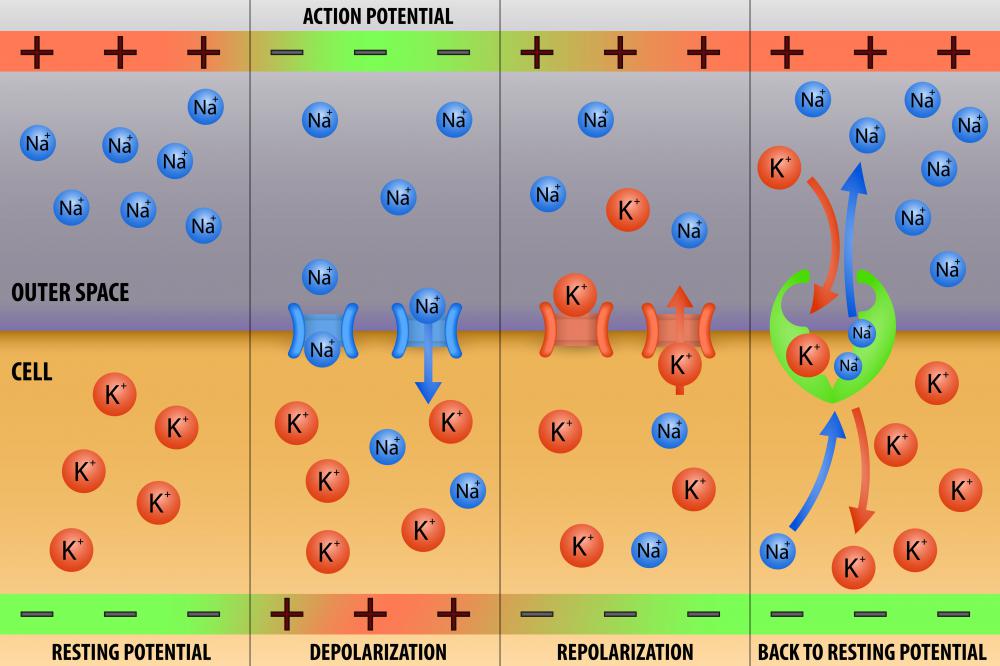At WiseGEEK, we're committed to delivering accurate, trustworthy information. Our expert-authored content is rigorously fact-checked and sourced from credible authorities. Discover how we uphold the highest standards in providing you with reliable knowledge.
What are Potassium Channels?
Potassium channels are a form of ion channel that are found in almost all living things. These channels span the membranes of cells and provide a means by which potassium ions can move in and out of cells. The movement of potassium in and out of cells creates a potassium gradient that helps to set the action potential and the resting membrane potential of a cell.
There are four types of potassium ion transport channels. Calcium-activated potassium channels open and close in response to chemical signals from calcium ions. Inwardly-rectifying channels pass a positively-charged current into a cell more easily than they pass the current out of a cell, allowing for an additional regulatory effect. Tandem pore domain channels are kept constantly open or have a high activation rate. These channels allow a fast rate of potassium movement. Voltage-gated potassium channels open and close in response to transmembrane voltage changes.

All types of potassium channels have a characteristic structure. The basic potassium channel structure is a tetrameric molecule which forms a class of protein called an integral membrane protein. The molecule is composed of four identical subunits which form a protein complex with four-fold symmetry. The complex is arranged around a central pore through which ions are conducted.

The function of the potassium channel is to transmit potassium ions between cells and extracellular spaces. Most cells maintain a potassium concentration that is much higher than the concentration maintained in extracellular spaces, helping to create a charge gradient across cellular membranes. Movement of potassium and other ions such as sodium and calcium across various types of channels is part of an ongoing cellular process that helps regulate many biological functions.
Potassium channels are highly ubiquitous in the natural world, and are present in almost all living things. These channels have a wide variety of biological functions, helping to regulate action potential in cardiac muscle, for example, and regulating cellular processes that control the secretion of hormones such as insulin. In neurons, the movement of potassium ions across channels helps set action potential, the wave of electrochemical energy that allows the cells to transmit neurological signals.
Because potassium ion channels are heavily involved in cardiac rhythm regulation, potassium channel blocker medication is commonly prescribed for many types of cardiac arrhythmia. When cardiac rhythm is abnormal, potassium channel blocker medication can restore a normal rhythm by increasing the duration of action potentials. These medications may be used as vasodilators in addition to their more common use as anti-arrhythmia drugs.
AS FEATURED ON:
AS FEATURED ON:












Discuss this Article
Post your comments